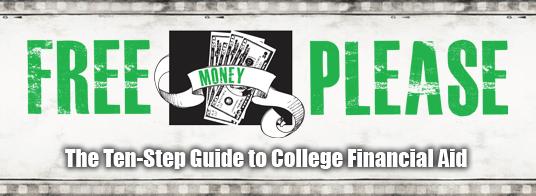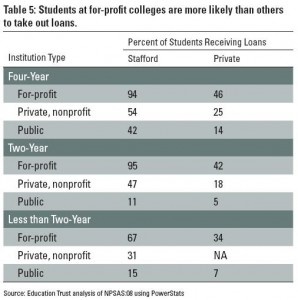Posted on Feb. 12th 2011 by Alexis
 1. Seeds of Love Scholarship
1. Seeds of Love Scholarship
This $1,000 scholarship is for students who are enrolled in the Minority Engineering Program at Auburn University in Alabama.
Eligible applicants must either be a full-time student at the University, a graduating high school senior, or enrolled in the Samuel Ginn College of Engineering-Alabama Power/Southern Company Academic Excellence Program.
Applicants must also have a minimum ACT score of 24, and a minimum undergraduate or high school GPA of 3.0. Preference will be given to the applicants who are from the Birmingham, Alabama area.
The application deadline is May, 2011.
2. We Love Steilacoom Association Scholarship
This $500 scholarship is specifically for Steilacoom High School seniors in Washington, and preference will be given to graduates who are entering a vocational/technical school or community college.
Applicants must demonstrate his or her financial need, and may also be required to participate in a personal interview with the scholarship committee.
Click here for the scholarship application, the deadline is April 1, 2011.
3. Rotary Purple Heart Scholarship
Only residents from the Jefferson, Lewis, or St. Lawrence counties who have been awarded with a Purple Heart are eligible for this $3,000 scholarship. (Dependents and spouses can also apply)
In order to qualify for the scholarship applicants must be a high school senior, a high school junior in an early graduation program, a student planning to attend a technical/vocational school, or a full-time undergraduate student with at least 12 credits per semester.
Applicants are asked to describe any “unusual hardships” and “special family or personal circumstances” in their application.
Click here for the scholarship application; for more information visit www.nnycf.org.
4. Mary E. Love Scholarship Fund
Eligible applicants must be a part- or full-time undergraduate student who has been accepted into the Nursing major at Rhode Island College. Students must also have an overall cumulative GPA of 3.00 in each nursing theory course taken.
Student will be required to submit a typewritten statement which explains his or her educational and professional goals, and the eligible recipients may have to participate in an interview.
The deadline is May 31, 2011; click here for the scholarship application.
5. Mind and Heart Scholarship
Whitworth University in Spokane, Washington is awarding $16,000 in scholarships per year to students who have SAT scores of 2020 or higher, ( or 30+ composite ACT), and a cumulative high school GPA of 3.75 or higher.
The recipients will also automatically qualify to compete in the Honors Colloquium program for other scholarships as well.
Visit www.whitworth.edu for the scholarship application.
6. Dr. Alice Morgan Love Scholarship Fund
This scholarship program was established to honor the memory of Dr. Alice Morgan Love who graduated from the University of Maryland in 1959 and also worked as an associate professor of physical education at the University.
The scholarship will be given to undergraduate/graduate students enrolled in the Department of Kinesiology in the School of Public Health, and recipients will be chosen based on their academic merit, demonstrated leadership skills, and commitment to community service.

7. Valentine Foundation Scholarship
The Valentine Foundation will be awarding three scholarships worth $4,000 to students enrolled at the University of Redlands in California. Eligible applicants must be undergraduate students who are majoring in math, biology, chemistry, physics, or computer science, and have a GPA of 3.0 or higher.
The application deadline is February 15, 2011.
8. A Servant’s Heart
In order to win one of these three $1,000 scholarships applicants must be a Loudon County high school senior with volunteer service experience.
Students are being asked to submit a letter of reference from a community service organization, a head shot or graduation photo in a JPEG format, and an essay which touches on theme: “A Servant’s Heart: Choosing to Serve.”
Click here for more information on the scholarship; the application deadline is April 15, 2011.
9. Red Pocket Scholarship
This scholarship is to help University of Minnesota students “incorporate an educational or research experience” in Mainland China, Hong Kong, Taiwan, or Macau as part of their study, internship, research, or professional training.
The scholarships are worth between $250 and $1,500, and will be used for the partial or total payment of travel or tuition.
Applicants must be a U.S. citizen or a permanent resident, have a GPA of at least 3.0, and be a full-time student enrolled in a “degree-seeking program” at the University of Minnesota.
The next scholarship deadline is March 25, 2011, and the application deadline for the fall/winter semesters is July 29, 2011.
10. Nellie Love Butcher Music Scholarship
This one-time $5,000 scholarship will be given to a music student who is pursuing an education in piano or voice, and preference will be given to students who are currently attending the Duke Ellington School of the Performing Arts in Washington, DC.
This scholarship is not renewable, however, recipients are allowed to reapply for the scholarship as long as they maintain a 3.0 GPA.
Applicants are asked to submit a performance CD on a compact disc along with their application.
The application deadline is April 15, 2011; for more information visit the DAR National Society website.
11. June S. Kang Love of the Arts Scholarship Fund
This scholarship is worth $2,500 a year for two years, and the recipients can use the money to pay for tuition at the institution of his or her choice.
In order to quality for the scholarship all applicants must have a “proven artistic ability” in either dance, literature, music, traditional arts, theatre, or visual arts.
The deadline is March 18, 2011.

12. Love Thy Neighbor
Since 1994 this program has awarded more than $300,000 in scholarships to students, and each year a graduating student from Pennsbury High School in Pennsylvania and Trenton Central High School in New Jersey are awarded with this $1,500 scholarship.
Applicants must be a high school senior, have a 2.5 grade point average, and be accepted into an accredited college or university. Recipients can also reapply for a renewal of the scholarship if they stay in school and maintain “an above average” grade point average.
Click here for the scholarship applications.
13. John Allen Love Scholarship
This scholarship is for an undergraduate/graduate student from Missouri, and preference will be given to applicants who live in St. Louis or St. Louis County as well as those who are enrolled in courses at the Department of Government and Foreign Affairs.
14. Erin’s “Love for Dance” Scholarship
This scholarship was created in memory of Erin Roderick, an adorable little 4-year-old girl who passed away on March 28, 2009 due to a reoccurring brain tumor. During her short life Erin had a passion for dance and never let her illness stop her from attending dance classes.
Applicants are being asked to submit an essay which explains why they “love to dance” as much as Erin did.
Click here for the application. The deadline is July 15, 2011, for more information call 978-562-0134.



 Unless you’ve been living under a rock, you’ve probably heard about the union protests that are spreading throughout the country like wildfire.
Unless you’ve been living under a rock, you’ve probably heard about the union protests that are spreading throughout the country like wildfire.
 The
The  1.
1. 

 It’s that time of year again to cast your vote for the annual
It’s that time of year again to cast your vote for the annual 

 For-profit institutions have always stated that their recruitment of low-income and minority students is “heralded as a sign of its commitment to underserved populations.” But the authors of the report state that low-income and minority students, (who are pursuing college degrees in record numbers), are targeted and then “recruited aggressively” by for-profit colleges. (Low-income students represent 50 percent of the student population at for-profit schools, while minority students make up 37 percent).
For-profit institutions have always stated that their recruitment of low-income and minority students is “heralded as a sign of its commitment to underserved populations.” But the authors of the report state that low-income and minority students, (who are pursuing college degrees in record numbers), are targeted and then “recruited aggressively” by for-profit colleges. (Low-income students represent 50 percent of the student population at for-profit schools, while minority students make up 37 percent).
 1.
1.  When applying to a college or a university, it is extremely important to understand the difference between a “reach school” and “safety school.” Due to the fact that admissions offices are receiving applications at record-high numbers, the acceptance rate for many universities and colleges has dropped considerably over the past few years. Because of this, many “safety schools” for high school students have suddenly become “reach schools” because their chances of not getting accepted are much higher than before.
When applying to a college or a university, it is extremely important to understand the difference between a “reach school” and “safety school.” Due to the fact that admissions offices are receiving applications at record-high numbers, the acceptance rate for many universities and colleges has dropped considerably over the past few years. Because of this, many “safety schools” for high school students have suddenly become “reach schools” because their chances of not getting accepted are much higher than before.